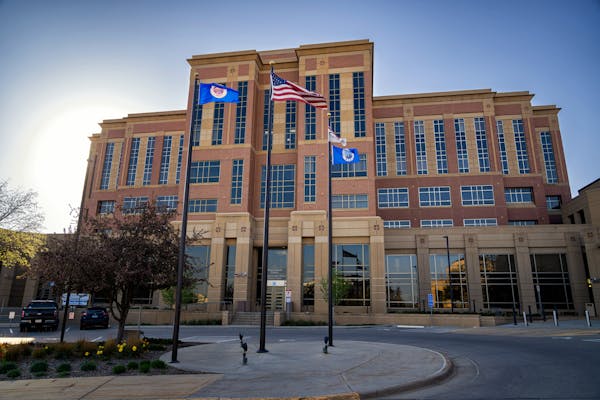For years, Reed Olson had been thinking about how to fight rural homelessness in his corner of northern Minnesota.
His organization, the Nameless Coalition for the Homeless — "because a lot of times, people in homelessness are seen as this nameless, faceless group," Olson explained — opened an emergency shelter in Bemidji in 2016. Two years later, they increased its capacity from 16 beds to 26. The number of people who spent the night there seemed steady in this Beltrami County city of 15,000.
Then COVID hit. Since then, the numbers have gone through the roof. Before the pandemic, the shelter registered about 2,500 night stays during each September-to-May window the emergency shelter is open. Between September 2022 and May 2023, that jumped to nearly 5,000 night stays. The shelter is one of four homeless shelters that serve different populations in Bemidji, and the coalition also opened a daytime drop-in center two years ago.
"People think you have homelessness in big cities and that you don't have homelessness in rural Minnesota or rural America," said Olson, a former Beltrami County Commissioner. "That's not true. It just takes a different form."
The organization recently secured a $683,000 grant from the state Office of Economic Opportunity to make improvements to its daytime drop-in New Day Center and its emergency shelter.
Organizers envisioned the drop-in center as a hub for wraparound services. The two-story 11,000-square-foot building, donated by Sanford Health, is filled with offices and meeting spaces where various organizations help people back on their feet, including county agencies, veteran groups and Sanford Health. The coalition is aiming for more programming, such as extending a series of painting workshops led by a local artist.
The daytime center is a necessity when Bemidji's winter gets frigid. The coalition recognized the need during a cold snap a few winters ago. Highs were well below zero. Public buildings were shut down for days. The coalition kept its emergency shelter open for 72 hours straight so clients wouldn't freeze to death.
A previous $600,000 grant from the state Department of Employment and Economic Development helped make the building ADA compliant, with new bathrooms, showers, laundry facilities and a wheelchair lift. The new grant will help replace the roof, install a new HVAC unit and redo the parking lot.
Last session, the Legislature dedicated significant funds to statewide homeless shelters. Rural homelessness is especially acute here.
Beltrami County consistently ranks near the bottom of the state's income scales. The county of 47,000 has a median household income of $62,000, about three-quarters the statewide average. Nearly one in five people here live in poverty, almost double the statewide rate.
Poverty is even more pronounced in the regional center of Bemidji. The city has a median household income below $50,000. Nearly 22% of its 15,000 people live in poverty.
Olson sees rural homelessness in Minnesota as a manifold problem without an easy solution. Drug and alcohol abuse is a contributor — so are low wages.
"If you go to a fast-food restaurant in Bemidji, there's a very good chance an unhoused person is in the work chain making that food," Olson said. "Maybe they have a criminal record, or bad credit or rental history."
But the number one contributor, Olson says, is simple: A desperate lack of affordable housing in greater Minnesota.
"We just don't have enough housing for our people," Olson said. "We don't have a lot of local real estate developers. Incomes just don't allow people to afford market-rate housing. So the people who end up unhoused are those with mental illnesses, those who are marginalized in society."
One day in the frantic life of a Children's Minnesota emergency room nurse
Sen. Nicole Mitchell off committee assignments while case under review

